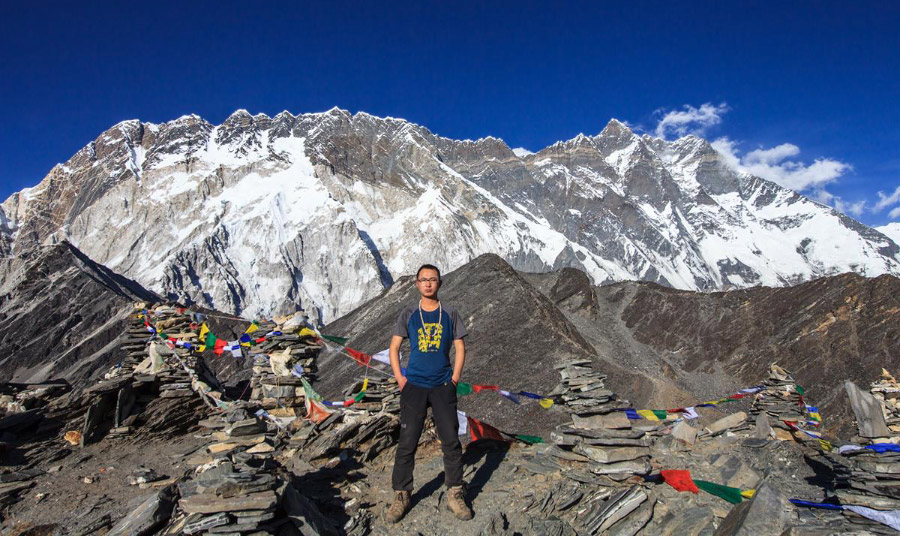Hoax & Misconception in Astronomy, a Never Ending Story?
- Details
- Category: GAM 2017 Blog
By Avivah Yamani
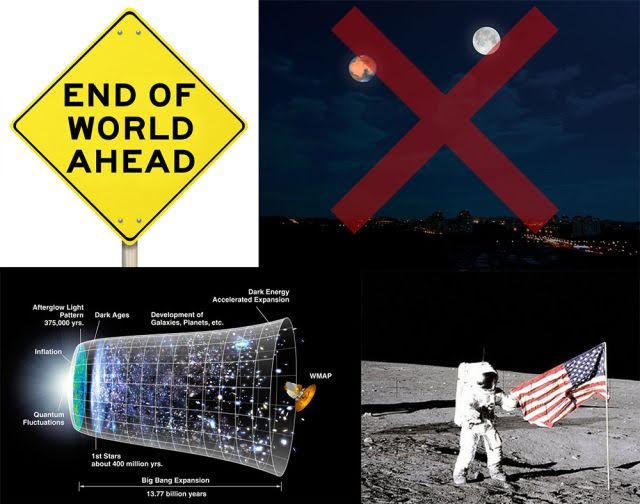
Hoax… Is it a new trend…or failure of education system? Well I don’t have an exact answer to that. But I always think of it as a lack of basic science in our society in Indonesia. Political situation in Indonesia also shares the evidence that people were easily fall into hoax news. It is also the case in astronomy.
In 2003, we encounter Mars hoax for the first time. This issue circulated by email and claimed that Mars would look as big as the full Moon to the naked eye on August 27, 2003. People easily fall into this issue. Curiosity arose and people visited the observatory, planetarium, and public places where astronomy community conducts public viewing. Several telescope were damage in Jakarta Planetarium while in other places, it was the longest queue we ever seen. The hoax has since resurfaced every year from 2005 through 2016. And I hope we won’t see it in the near future…but I guess…we will need to write the same story again and again to counter this issue.
In 2006, we had another issue here. A book has been published as an evidence of geocentric idea. The Sun goes round the Earth and our beloved Earth stands still. It was hot debate in many mailing list and online forum. This misconception is still recurring, and in our point of view, this is all because of the lack of basic science.
This 2 events, along with the lack of astronomy media and transit Venus events in 2004, became the reason to start a new astronomy blog. Our purpose was to share astronomy information as well as educating public in astronomy. In short, we want to build astronomy awareness among Indonesian public. In our new blog which we name langitselatan or Southern Sky, we also counter astronomy hoax.
Once we started the blog, we encounter people who want to know more about the Moon Landing hoax. So it became another popular story in our site.
Started in 2009, the upcoming release of 2012 movies drag people to believe that the world was come to an end. The 2012 doomsdays issue started. And I’m sure this one became hot issue everywhere in this blue planet. It was in Indonesia. The peak was in 2012 when the Mayan Calendar end its long calendar. Our statistics shows that public interest on astronomy get its peak in 2012 and most of our reader looking for 2012 doomsday issue including nibiru, planet alignment, and solar cycle. Another false story in 2012 was Betelguese will explode as supernova and its explosion will affect the Earth.
Ok... lets move to another hoax. We also encounter the most frequent question from our reader and this issue gets its spot in several mainstream media here. “The Universe shaped like a trumpet”. And public related this issue to their faith.
In 2014 and 2015, another story of the end of the world reappeared. This time, the tetrad lunar eclipse became the suspect for blood moon prophecy. Not just the lunar eclipse. The Total Solar Eclipse in 2015 was also famous for this end of the world prophecy.
In 2016… We were once again encounter the same issue regarding total solar eclipse. We had many false beliefs toward the eclipse. And the most famous issue in 2016 aside than Total Solar Eclipse was flat earth issue, many people fall into this issue. Many of them believe that they have been deceived by global organization about this and that all scientific results were fake. And again as usual, public relate this issue with faith. There were hot debates everywhere, especially in social media. Several organization and astronomy community organize a discussion about this issue and mainstream media outlet pick this issue as one of their hot news.
In 2017… we still have this flat earth society. And it looks like this issue won’t end anytime soon. But we also have other false issue. Misinformation about perigee and equinox leads people to believe that the earth temperature especially Indonesia will increases very high and we will have heat wave.

Sad but true… hoax or fake news usually gain more interest from public. Public usually interested on how to observe the event or what’s the relation with their life. Hoax generates instant curiosity among public. People talk about the astronomy issues and looking for the answers.
False issue like this can be destructive but it can also be a good opportunity to introduce astronomy to the public. This is why we need to communicate science in every way through every channel.
2017 is the 10th anniversary for our online media. Aside than hoax, public do looking for astronomy news, information and events such meteor shower, eclipse and etc. But still, hoax received more attention from public. And sometime it is the easiest way to talk about astronomy to the lay people.
 Avivah Yamani is an astronomy communicator from Indonesia. She is a co-founder of langitselatan, an astronomy online media and a Project Director of 365 Days of Astronomy.
Avivah Yamani is an astronomy communicator from Indonesia. She is a co-founder of langitselatan, an astronomy online media and a Project Director of 365 Days of Astronomy.
The astronomy and celestial beauties: all the time for everybody
- Details
- Category: GAM 2017 Blog
By Valentin Grigore

The International Year of Astronomy 2009 was the most important global celebration of astronomy in the human history.
After this incredible event when people from all over the world experienced together the beauties of the sky, Astronomers Without Borders continue to encourage people to share the same sky through Global Astronomy Month, a model about how we can promote astronomy and education through astronomy whole the year and for all people.
The Romanian Society for Meteors and Astronomy (SARM) was founded in 1993 to fill the gap in popular astronomy created in Romania by a former totalitarian regime.
The concept of SARM, astronomy-culture-art-education-society, has been materialized through events organized during whole the year:
- astronomical camps, events and activities of popularization of astronomy in schools, museums, universities, theatres, cultural centers, public libraries,
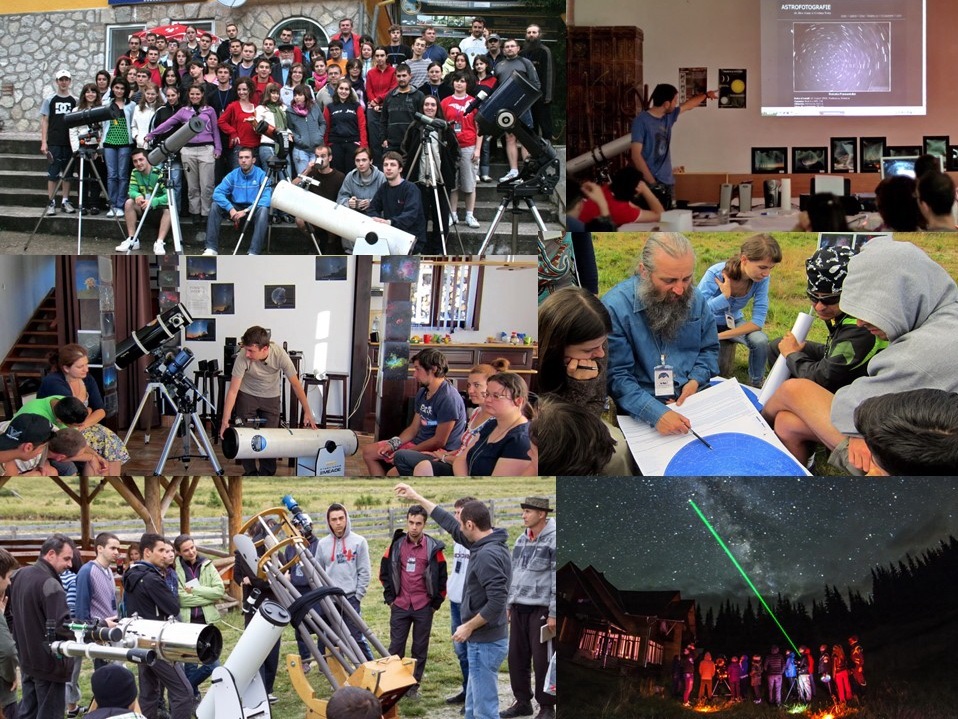
houses for people with disabilities and even prisons, culminating with the annual Perseid national camp (including a summer astronomical school), the national contest of astrophotography, Noi si Cerul (Us and the Sky) TV show, national galas of astronomy and cosmopoetry festivals;

- national and international expeditions for the observation of more sky phenomena and visiting the largest telescopes in the world;
- participations at international conferences and projects of observational astronomy and astrophotography.

Later, SARM gladly became part of Astronomers Without Borders, the new international house of the celebration of astronomy, whose astrohumanist principles for spreading astronomy all over the world are quite impressive.
That’s why the Global Astronomy Month has become the highest invitation for people to be both earthly and cosmic.
That’s why every year SARM tries to be a good contributor for this event, following its traditional creeds, like these:
"Come with us and admire
The splendors of the starry sky.
Look at the bright stars and discover
He Who Created The Light.”
-Valentin Grigore-
"In the House of the Universe
Say: It’s mine!
But talking to stars
You must shine.”
-Andrei Dorian Gheorghe-
 Valentin Grigore is the founder and President of the Romanian Society for Meteors and Astronomy (SARM), the national society of astronomy in Romania. He started his activity in astronomy in 1982 (14 years old) as autodidact. He is the founder of the Romanian meteor school and of the annual national astronomical camp and summer astronomical school "Perseide" (first edition in 1993), the most important astronomical event in Romania. Also, in 2000 he founded the biennial Astrophotography National Contest and International Exhibition. In 1992 he became member of the International Meteor Organization (IMO). Currently, he is the National Coordinator in Romania of the Astronomers Without Borders, member in the Committee of Initiative of EURONEAR project (European Near Earth Asteroids Research) and Board Member of One Star at a Time: Reclaim the Starry Night Sky. In the last 25 years, Valentin leaded hundreds of educational and observational astronomical projects in Romania and abroad. In 2000 and 2011 he led the organization of the International Meteor Conference in Pucioasa and Sibiu (Romania). Since 2008 he is the producer of "Noi si Cerul" (Us and the Sky) astronomical TV show in Romania.
Valentin Grigore is the founder and President of the Romanian Society for Meteors and Astronomy (SARM), the national society of astronomy in Romania. He started his activity in astronomy in 1982 (14 years old) as autodidact. He is the founder of the Romanian meteor school and of the annual national astronomical camp and summer astronomical school "Perseide" (first edition in 1993), the most important astronomical event in Romania. Also, in 2000 he founded the biennial Astrophotography National Contest and International Exhibition. In 1992 he became member of the International Meteor Organization (IMO). Currently, he is the National Coordinator in Romania of the Astronomers Without Borders, member in the Committee of Initiative of EURONEAR project (European Near Earth Asteroids Research) and Board Member of One Star at a Time: Reclaim the Starry Night Sky. In the last 25 years, Valentin leaded hundreds of educational and observational astronomical projects in Romania and abroad. In 2000 and 2011 he led the organization of the International Meteor Conference in Pucioasa and Sibiu (Romania). Since 2008 he is the producer of "Noi si Cerul" (Us and the Sky) astronomical TV show in Romania.
He is an active militant for the protection of the dark-sky.
Valentin's State of Sky
Valentin on Facebook
Closer to the Stars, since the year 2000
- Details
- Category: GAM 2017 Blog
By Ricardo Cardoso Reis (Planetário do Porto & Instituto de Astrofísica e Ciências do Espaço)
The Planetário do Porto - Centro Ciência Viva (Porto Planetarium - Living Science Center) opened to the public in November 1998, but its history actually started years before.
It is a rare case of a science center managed by a research center. And when it was founded in 1989, the Centro de Astrofísica da Universidade do Porto (and the Instituto de Astrofísica e Ciências do Espaço, since CAUP’s merger with its counterpart in the University of Lisbon) has in its statutory objectives the support and promotion of Astronomy, through research, education, activities for schools and science outreach. That’s why, as early as 1990, CAUP started a portable planetarium program, which still travels to schools.
Leaping forward to 1997, CAUP took an active role in the very first “Astronomy in the Summer” national activity, organized by Ciência Viva, the Portuguese national agency for scientific and technological culture.
So, public observation with telescopes was something we already had experience with when the planetarium opened. That’s why about a year later, in January of the year 2000, we decided to create “Mais Perto das Estrelas” (Closer to the Stars), a walk in, free or charge, monthly telescope observation night.
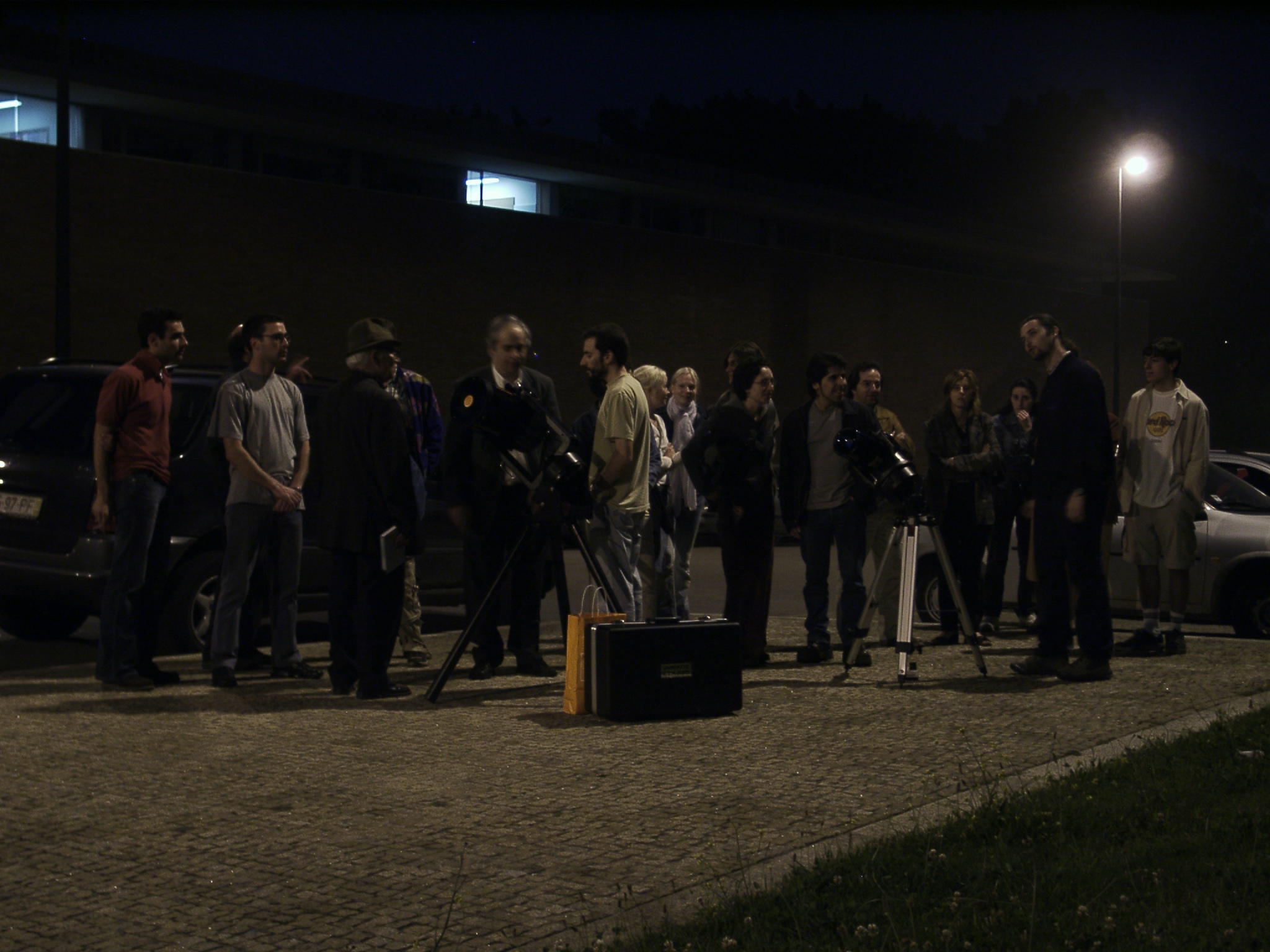 The first incarnation of Closer to the Stars, outside the planetarium building, in 2002.
The first incarnation of Closer to the Stars, outside the planetarium building, in 2002.
Initially, it was just observation. Every second Thursday, starting at 21h00, we’d set up our telescopes outside the planetarium, and stayed for as long as we had visitors, which sometimes meant one lone straggler that stayed past midnight. Since Friday is a work day, and schools arrive early in the morning for planetarium shows, eventually we had to set 23h00 as the time limit.
Bad weather would sometimes force us to cancel the activity, but despite that (and our many warnings that the activity would not happen with bad weather), some people would still show up, sometimes after driving for dozens of km, just to return home disappointed.
Because of those cases, we started to use the wonderful resource at hand – the Porto Planetarium dome. Every “Closer to the Stars” now starts with a mini presentation of about 10 minutes, showing the sky that night. With bad weather, we extend the presentation up to half an hour.
 Constellations inside the Porto Planetarium dome, during the mini sky presentation.
Constellations inside the Porto Planetarium dome, during the mini sky presentation.
After the demonstration, if the weather permits, we move outside to our previously set up telescopes, and observe for up to 1,5 hours.
During that time, we observe whatever astronomical objects are above the planetarium walls, which block the sky up to about 35 degrees over the horizon. It seems a lot of sky to lose, but atmospheric turbulence close to the horizon and light pollution in Porto render that area useless for observation anyway, so it’s not a big loss.
Actually, light pollution, together with fog (Porto is a city with river and ocean, both of them very near the planetarium) are our worse enemies. Even bright deep sky objects, visible with the naked eye in a dark sky, can only be seen with a telescope here.
But Porto is not a city with an extremely high level of light pollution, so if there is no fog, we are able to show the craters of the Moon, the rings of Saturn, the phases of Venus and the moons and stripes of Jupiter. In a good night, we can also see the core of the Andromeda galaxy, the Ring Nebula, Hercules Star Cluster or Orion’s Nebula.
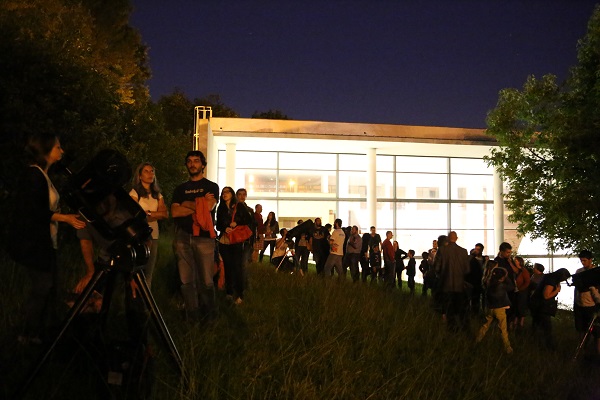 Current Closer to the Stars format, at the inside garden of the planetarium.
Current Closer to the Stars format, at the inside garden of the planetarium.
Usually, “Closer to the Stars” is a two person crew. One presents the sky in the planetarium, while the other sets up the telescope(s). When we move outside, one mans the telescope and the other talks to visitors (answering general astronomy questions, talking about research at IA or showing, in the real sky, some of the constellations shown inside the dome). When the crowd is really big, each takes one telescope and talks to the visitors.
The turnout is very seasonal. We have few people during the winter months, and go up to a couple of hundred during the summer. Unusually large crowds gather during rare astronomical events, like eclipses or even “super” Full Moons.
 Huge rows of people waiting to see the "Super" Full Moon of 14th of November 2016
Huge rows of people waiting to see the "Super" Full Moon of 14th of November 2016
Many times we are asked “Why not take these observations to darker places?”
We did try it, but the turnout was disappointing. Some exceptions were the few times where the observations were included in larger programs, like Dark Sky Party Alqueva or Astronomy in the summer.
 Photo of the Moon taken through our telescopes, during the Closer to the Stars edition of 8th of May 2003. |
So, like many sidewalk astronomers around the world would tell you, we have to weigh sky quality versus turnout, and if you want to reach people, you often have to sacrifice the latter for the former. And for most people, who never looked through a telescope, just seeing the craters of the Moon or the rings of Saturn is enough to leave in awe. |
That’s why we keep doing it, every month, without interruption, since the year 2000.
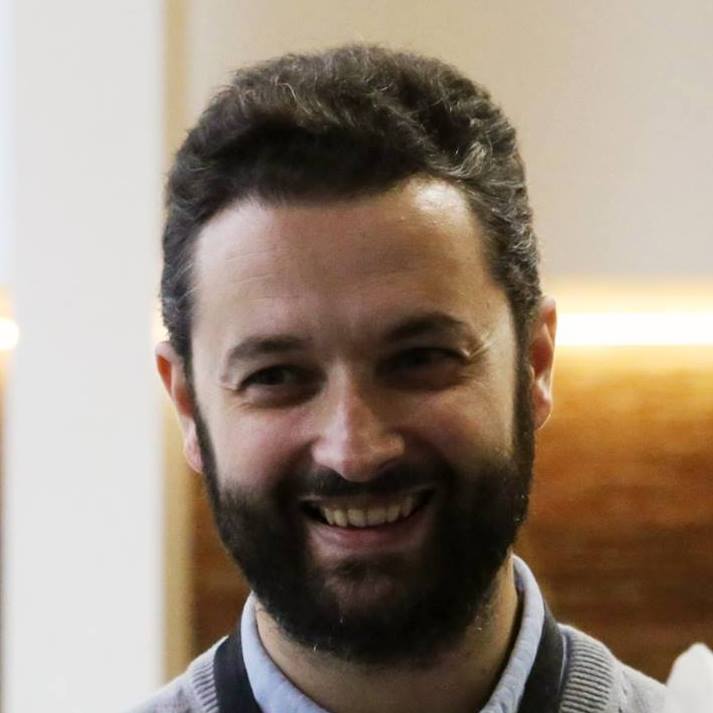 Ricardo Cardoso Reis works as science outreach officer at Instituto de Astrofísica e Ciências do Espaço (IA) and as planetarium producer/presenter at Planetário do Porto – Centro Ciência Viva, in Portugal. Between 2010 and 2012 he was solar activities coordinator for Global Astronomy Month. During the International Year of Astronomy 2009 (IYA2009) he was a member of the International task group and Portuguese co-coordinator for 100 Hours of Astronomy (and co-coordinator of “Sun Day” activity) and Galilean Nights; and the International coordinator of Dawn of IYA2009, the first global event of IYA2009.
Ricardo Cardoso Reis works as science outreach officer at Instituto de Astrofísica e Ciências do Espaço (IA) and as planetarium producer/presenter at Planetário do Porto – Centro Ciência Viva, in Portugal. Between 2010 and 2012 he was solar activities coordinator for Global Astronomy Month. During the International Year of Astronomy 2009 (IYA2009) he was a member of the International task group and Portuguese co-coordinator for 100 Hours of Astronomy (and co-coordinator of “Sun Day” activity) and Galilean Nights; and the International coordinator of Dawn of IYA2009, the first global event of IYA2009.
A Day in the Life of an Astronomer…
- Details
- Category: GAM 2017 Blog
By Kimberly Cullen
When ever I get asked “So Kim, what do you do?” I generally say “I’m an astronomer (or astrophysicist if I want to sound super smart or theoretical astrophysicist if I really want to take someone down a peg) by trade and now I work as a science communicator”. Usually at this point I get asked “What’s a science communicator?” which is something we can get into another time… What I want to talk about is what an astronomer does on a day to day basis.
What do you think about when you think of what an astronomer does every day? Take some time here to daydream. What did you come up with? Most people who are not involved in the industry (yes, astronomy is an industry) usually imagine someone sitting up all night every night looking through telescopes. Spoiler alert: This is not the case.
There are two major “fields” or “areas of study” in astronomy – you’re either an “observational” astronomer where you get to use telescopes (optical, radio, gamma, etc) to collect data or a “theoretical” astronomer where you get to use amazing computers (called super computers) to run simulations of how the universe, galaxies, etc are formed, evolve, die etc. Within each of these there are of course intricacies and subcategories however today I’m going to keep it this broad.
Each of these areas of study have their own idiosyncrasies and neither one involves looking through a telescope each and every night – not even observational astronomers are “observing” all the time. In fact theoretical astronomers almost never use telescopes. On a daily basis, astronomers spend most of their time doing one of two things – analysing the data they’ve collected or researching what is happening and being discovered in their niche area of astronomy by reading other astronomers published papers.
An observational astronomer who has been granted “telescope time” (time to use the telescope to collect data or information) may only be given a few days or so to use the telescope to gather data. This means travel to some exotic locations Chile, Hawaii, Parkes! Not necessarily, these days “remote observing” is becoming more and more prevalent. This means that you can login to the telescope and do your observing from the comfort of your own office.
Hint: If you don’t want to have to worry too much about the weather either don’t do research that uses light (as you can’t observe during the day or if the weather is not good), use a space based telescope or be a theoretical astronomer.
A theoretical astronomer generally doesn’t use a telescope at all. Similar to an observer, a theoretical astronomer can be granted “computing time” (time to use the super computer to run simulations) however this too is limited.
Note: Observational and theoretical astronomers work together to explain the universe – an observer observes what’s there and a theoretician tries to simulate how what is seen came to be using maths, physics and lots of computing power. When it doesn’t match up then it’s back to the drawing board for one or both to figure out what’s going on.
A lot of an astronomers time is spent in front of their computer analysing the data that they’ve collected, either from telescope or computing time. The vast amounts of data that has been collected needs to be analysed. The “raw” data often contains far too much information to clearly see any patterns without looking at it in a different way. This analysis requires time for the raw data to be analysed using different software packages. In some cases, the astronomer needs to create new or amend current programs to read and present the data in a way that is useful for what they want to do with the data.
Most of the rest of the time an astronomer needs to keep up with the research being conducted by other researchers in their particular area of astronomy. This is so that when new discoveries are made they can be referenced, used as a basis for their research, etc and to make sure that the one massive discovery that they’re working on doesn’t get published by someone else first!
Whilst astronomy may not be the “glamourous” profession you may have initially thought, the discoveries that are made definitely are. Astronomers look into the face of the universe and attempt to explain how and where it all came from.
Who can say that isn’t glamourous…
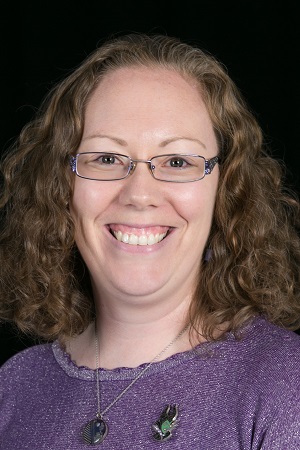 Kimberly's "trade" is physics and astrophysics however she has been working and volunteering in Science Communication for over 10 years. Her science communication background is in Performance Science Communication having held several roles where she would present science shows to school groups and the general public. She currently works at the University Technology Sydney.
Kimberly's "trade" is physics and astrophysics however she has been working and volunteering in Science Communication for over 10 years. Her science communication background is in Performance Science Communication having held several roles where she would present science shows to school groups and the general public. She currently works at the University Technology Sydney.
Exciting young people about science and science careers is Kimberly's passion shown by her consistent involvement with in the Science Communication industry. As well as this, Kimberly has a passion for supporting early career Science Communicators and in order to do this at ground level she has recently taking on the mammoth role of President of the NSW Branch of the Australian Science Communicators which is currently undergoing a rebirth after being inactive for the last few years.
First TWAN Exhibit in China
- Details
- Category: GAM 2017 Blog
By Jeff Dai
The first TWAN Exhibition of China during the Global Astronomy Month is holding at Shanghai Astronomical Museum. The museum is a popular public place located at Sheshan Observatory founded by French Jesuits in 1900.
As supported by Shanghai observatory, Chinese Academy of Sciences. The exhibition will lasts 4 months (2017 March 26th - 2017 July) with the theme of “One World, One Sky”. It was created based on 40 photos which come from TWAN main gallery, Guest Gallery and Chinese TWAN contest winners. There are also a 8 minutes video and a regional map of the Earth at Night which marks the imaging location.
This collection of nightscape images from all 7 continents were carefully selected to display every aspect of practical astronomy, Showing that the eternally peaceful sky looks the same above all the landmarks and symbols of different nations and regions, attesting to the truly unified nature of Earth as a planet rather than an amalgam of human-designated territories. Which present the theme of the exhibition “One World, One Sky”.

Hou Jinliang, the Secretary of Shanghai observatory, Ajay Talwar and Jeff Dai, the TWAN members from India and China, Zhou Yannan, the winner of TWAN contest in 2015 attend the opening ceremony on 2017 March 25th. The physics opening of The 2017 International Earth and Sky Photo Contest was also hold along with the exhibit.
In March 26th - March 28th. Ajay and Jeff had a research at Kaihua, Zhejiang province of China. Kaihua have several ancient chinese villages with natural dark sky. Cooperating with IDA Beijing and Starry committee of China, it’s planing to be one of the first dark sky reverses in China which will benefit to the citizens of Yangtze River delta. Ajay and Jeff also have a public lecture in the local Hope Primary School, high light the importance of night sky as an essential part of our life.

The exhibition will be expand to the schools, shoping-mall,and the other public places for the further influence of TWAN spirit in China.
This article has also been published on The World At Night website.
For Jeff Dai's biography, please click here. 